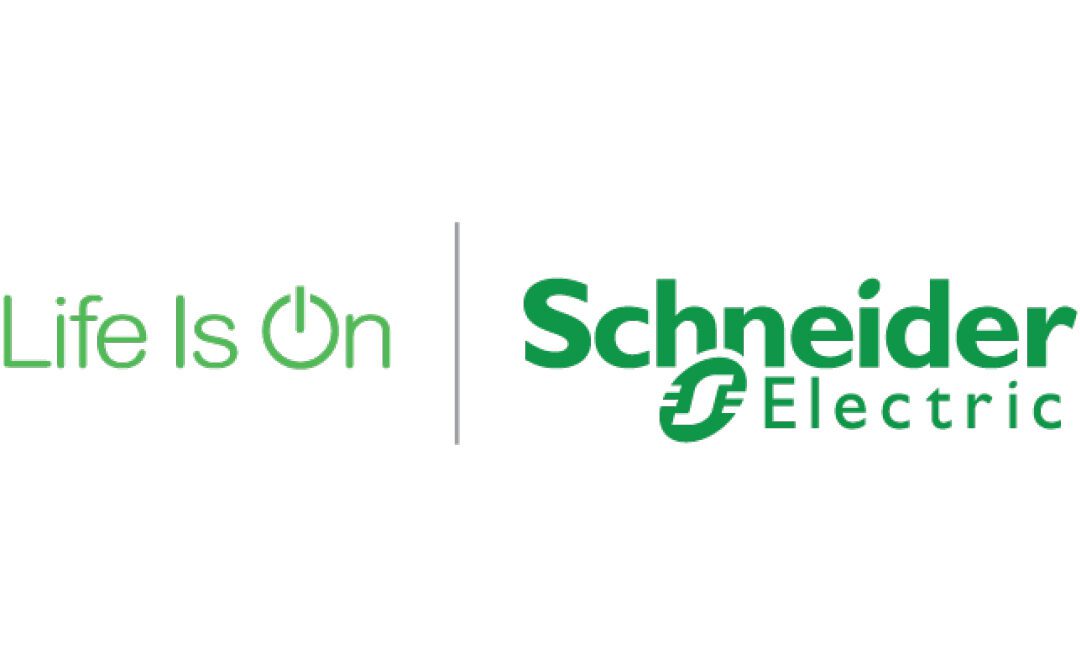
by | Jun 20, 2025 | Business
MANILA, Philippines – June 20, 2025 – iGamingPH.com, a leading online resource for safe and informed gaming in the Philippines, today issued a critical advisory to Filipino players concerning the evolving landscape of online casinos. While regulatory bodies are implementing new safeguards to protect consumers, the risks associated with certain mobile-first gaming applications that prioritize rapid access over verified compliance, such as those exhibiting characteristics frequently seen in promotions for online gaming app Casino, remain significant.
The advisory comes on the heels of the Philippine Amusement and Gaming Corporation (PAGCOR)’s launch of its new “PAGCOR Guarantee” website. This crucial online platform empowers the public to verify the legitimacy of online gaming providers, offering a direct tool to avoid falling victim to fraudulent operators. PAGCOR Chairman and CEO Alejandro H. Tengco emphasized that this initiative is a “key component of our regulatory framework to protect both the industry and the Filipino people,” directly addressing concerns over unlicensed operations that often withhold winnings and erode public trust.
“The ‘PAGCOR Guarantee’ website is a vital step forward in empowering players to make informed decisions and and avoid illicit platforms,” states an iGamingPH.com spokesperson. “However, the allure of easy access offered by many mobile apps continues to draw players. It’s crucial for players to understand the inherent dangers behind what appears to be quick convenience, especially from platforms whose operational details are not fully transparent or verifiable through official channels.”
The Model of Apps Promoted Like Gaming App Casino: Convenience vs. Critical Safeguards
Apps frequently promoted like Casino, for example, exemplify a trend in the market with features such as:
Seamless GCash Integration:They often boast efficient deposits and withdrawals via GCash, leveraging its popularity for user convenience.Minimal Verification:New users can often register quickly with no extensive ID verification, lowering barriers to entry.Aggressive Marketing:These apps typically rely heavily on affiliate marketers and social media (Telegram, Facebook, TikTok) for promotion, frequently using bonus codes and exclusive offers to attract users.
While these features offer undeniable convenience, iGamingPH.com’s analysis of such platforms reveals critical underlying risks that players must recognize:
Ambiguous or Unverifiable Licensing:Many apps operating in this manner do not publicly display a clearly verifiable gaming license from PAGCOR or other recognized regulatory bodies. This absence of transparency indicates a potential lack of legal oversight and consumer protection, making it difficult for players to ascertain their legitimate operating status.Manual & Opaque Withdrawals:Unlike regulated casinos with automated systems, withdrawals often rely on manual requests via agents, leading to unpredictable response times and frequently undisclosed rollover rules that can trap player funds.No Verifiable Game Fairness:Without independent RNG (Random Number Generator) audits and certifications from recognized testing labs, players cannot verify if the games are truly fair and random or if their outcomes are manipulated.Absence of Responsible Gaming Tools:Crucially, these apps typically lack essential safeguards such as deposit limits, self-exclusion options, or in-app reminders, offering no support for players at risk of developing problematic gambling habits.
Broader Industry Efforts Towards Player Safety and Integrity
Beyond PAGCOR’s new verification tool, the Philippine Department of Justice (DOJ) has recently reaffirmed its commitment to combating financial crimes, including money laundering within the casino sector. This intensified focus on anti-money laundering (AML) efforts, coinciding with the country’s removal from the European Commission’s high-risk list for financial crimes, signifies a broader push for integrity across the financial ecosystem, including gaming.
Furthermore, leading digital payment provider GCash continues to issue strong warnings to users against scams involving gambling apps that misuse its brand for phishing, urging users to never share their MPINs or OTPs.
The importance of responsible gaming is also gaining traction. The Philippine Charity Sweepstakes Office (PCSO) recently observed its “Responsible Gaming Awareness Day” with the theme “Play Smart, Play Safe,” while PAGCOR-licensed operator DigiPlus (through its BingoPlus Foundation) is pioneering in-app safeguards, financial education campaigns, and mental health training for staff.
iGamingPH.com strongly advises players to utilize its comprehensive resources, including:
Responsible Gaming AdviceYour Money, Your Life (YMYL)guidelines for financial safety.Detailed insights on How We Review Mobile Gaming Apps.
“Our mission is to equip Filipino players with the knowledge to navigate the online gaming world safely,” Miya Kassandra Lee added. “Always choose platforms with clear Privacy Policies and transparent Terms and Conditions. For regulated and secure options, explore our mobile gaming section.”
About iGamingPH.com: iGamingPH.com is a dedicated online resource providing comprehensive reviews, guides, and news on the Philippine iGaming market. Our mission is to promote responsible gaming and empower Filipino players with accurate, unbiased information to make safe and informed choices. Learn more on our About Us page.

by | Jun 19, 2025 | Business
The dramatic real-time tactical adventure “GiLGuL” launched on Steam on June 19, 2025. This Japanese indie game is developed by Production Exabilities and published by Skeleton Crew Studio. The title GiLGuL means “reincarnation” in Yiddish, and through the story of a girl who desperately seeks life more than anyone else, it explores themes of what it means to live—a tale of spiritual training and salvation.
Story
A World Between Life and Death
Trapped between worlds, in a realm where those who long for death yet can’t find. Here, our protagonist, Mitsu Mao, who clings desperately to life, finds herself lost.
She soon learns that the Interworld is made up of multiple floors, and that reaching the topmost one might allow her to return to the real world. Driven by her desire to return, Mao begins her perilous climb. Along the way, Mao encounters several people who had wished for death, each burdened by their own tragic past.
As she speaks with them, she is forging bonds, uncovering their stories, and perhaps even altering their fates. Their lives intertwine with hers, shaping her understanding of life, death, and the mysteries of this world.
Embark on a moving adventure through a world teetering on the brink. Experience a dramatic tale of hope and despair, life and death.
Characters
“GiLGuL” features a cast of unique characters and is a fully voiced adventure game created in collaboration with popular Japanese voice actors to bring the game’s world and story to life more vividly.

Character Voice
- Mao Mitsu (Voice: Tomoyo Takayanagi)
- Bikke (Voice: Yuina Itou)
- Miku Tatsumi (Voice: Kana Yuuki)
-
Yuria Torikai (Voice: Akiho Suzumoto)
-
Kaede Mizuura (Voice: Yuki Tanaka)
-
Himena Onikoube (Voice: Eri Yukimura)
-
Megumi Mokudai (Voice: Kiyono Yasuno)
Game Content
Adventure Part
A story of joy and sorrow unfolds between Mao, Bikke, and the people they meet in the Interworld.
The choices you make shape Mao’s relationship with the other characters, the course of the story, and even the future of each character.

Tactical part
Hordes of monstrous creatures roam the in-between world, seeking to drag Mao and her companions down with them. Utilize a variety of skills, tactics, summoning abilities, and strategic teamwork to overcome these obstacles and continue your quest to reach the real world.

Theme Song「GiLGuL Reincarnation」
Megumi Nakajima, who made her voice acting and singing debut as Ranka Lee in MACROSS Frontier and has since played numerous heroine roles while flourishing as both a voice actress and singer, teams up with rising creator yuigot—currently attracting widespread attention through collaborations with various artists, including official remixes for tofubeats and music contributions to voice actor projects and rhythm games, as well as his work with PAS TASTA—for the theme song of GiLGuL. Together, they have created a track that captures the game’s atmosphere with a sense of floating unease, deepening the expression of its world.
「GiLGuL Reincarnation」short ver. MV
https://www.youtube.com/watch?v=r8t-ehNB_GQ
https://store.steampowered.com/app/3351660/_GiLGuL/
https://GiLGuL.publishing.skeletoncrew.co.jp/

by | Jun 18, 2025 | Business
Schneider Electric, the leader in the digital transformation of energy management and automation, today announced a landmark multi-year initiative dedicated to building a new kind of integrated ecosystem for sustainability and energy management, backed by a significant growth model that represents the company’s commitment to forward-thinking software and innovation.
At the core of this initiative is an emerging artificial intelligence technology known as Agentic AI. These agents are a new kind of software designed to work independently or collaboratively with clients and consultants to anticipate needs and adapt to complex environments in real time, ushering in a new era of simplification and automation in sustainability. Conventional software has historically been used as a tool to help you perform tasks, while this initiative with embedded AI agents that can do work for you, demonstrates the paradigm-shifting nature of an AI-native, agentic software ecosystem.
The company’s next-generation ecosystem will reimagine energy and sustainability management by serving as both the command centre and coordination layer for strategy and decision-making. By embedding AI agents into adaptive workflows that seamlessly integrate with human experts and enterprise systems, it is set to transform disconnected sustainability efforts into an intelligent ecosystem that continuously optimises outcomes and drives sustainable impact.
“Our vision is collaborative intelligence – agentic AI that works alongside human experts as a true digital teammate,” explained Steve Wilhite, President of Schneider’s Sustainability Business division. “This technology allows us to create a force multiplier effect where complex data analysis and tasks are automated, freeing our clients to focus on the strategic initiatives and innovations that lead to greater impact – a fundamental shift in how organisations can accelerate on their energy and decarbonisation journeys.”
Schneider Electric has appointed Julien Picaud as Head of Product Management to lead this initiative. Picaud comes to Schneider Electric with a background in strategic leadership and product management, and a focus on digital innovation and AI-focused initiatives that enhance business performance and intelligent resource and emissions management. Picaud will spearhead the investment which will reimagine core functionality from the company’s existing software platforms while debuting new features from the recent acquisition of leading sustainability firm EcoAct, including:
- Decarbonisation Strategy
– Scenario Analysis
– Benchmarking
– Emissions Management
– Reporting & Compliance
– Climate Risk
– Value Chain Engagement
– Energy Management
– Resource Efficiency
– Data Integration, Automation, & Visualisation
– Modernised User Experience
Schneider Electric is the world’s leading provider of solutions for the energy transition and is backed by more than two decades of helping thousands of multinational corporations worldwide to achieve their energy and sustainability goals. This market-leading expertise underpins the new ecosystem and will enable clients to benefit from the company’s breadth and depth, bringing together the very best in both human and artificial intelligence.
“In specialised fields like energy and sustainability, agentic AI is only as effective as the depth of domain expertise embedded in its design,” said Amy Cravens, Research Director, Sustainability and ESG Software, IDC. “Guided by decades of experience with a team of deep, domain-level consulting expertise, Schneider Electric is creating an agentic AI ecosystem that sets a new standard for sustainability management, equipping organisations to meet increasingly complex challenges. This next generation agentic AI will readily transform information management into actionable systems of the future.”
Schneider Electric’s globally recognised leadership in sustainability and ethics—ranked the World’s Most Sustainable Company by Corporate Knights and a 14-time honoree as one of the World’s Most Ethical Companies—provides a strong foundation for pursuing this investment responsibly.
“Recognising the energy intensity of AI, we are committed to developing and deploying this investment with a focus on computational efficiency and responsible resource usage. By integrating the principles of frugal AI, we are designing systems that deliver maximum intelligence with minimal resource consumption. This means leveraging leaner models, efficient algorithms, and optimised infrastructure to reduce energy use, emissions, and costs without sacrificing performance.” said Dan Whitsell, CTO and Head of Software Engineering for the Sustainability Business division.
The announcement builds upon the company’s proven track record of AI innovation, spanning Resource Advisor Copilot for enterprise sustainability insights, a global AI hub saving $15M in optimisation, 18+ AI patents, and a strategic partnership with Nvidia to prioritise efficiency and sustainability in data centre infrastructure at scale.

by | Jun 18, 2025 | Business
Karaoke Manekineko Malaysia has expanded its snack menu with a new playful twist, aimed at enhancing the customer experience beyond just karaoke. The introduction of the MANECKEY Shake Shake Fries signals the brand’s growing interest in snack culture and casual food trends among younger audiences.
A familiar staple gets a fun upgrade as Karaoke
Manekineko rolls out its latest
menu item: MANECKEY Shake Shake Fries. This new offering taps into the
appeal of interactive snacking—where customers can season and shake their fries
to their liking before digging in.
Designed to align with evolving dining habits, the Shake Shake Fries
come with a choice of seasoning flavours and a signature packaging that
encourages customer participation. While karaoke remains the core attraction,
the brand is increasingly acknowledging that customers are also seeking light,
enjoyable meals that complement the social and entertainment setting.
A representative from Koshidaka Malaysia noted that the snack was
introduced following observations that quick, customizable bites tend to
perform well among teen and young adult demographics, particularly those
visiting during student hours or group hangouts.
“Snacks like these serve as a bridge between music, movement, and food,”
the representative shared. “It’s about enhancing the experience without
interrupting it.”
The introduction of the MANECKEY Shake Shake Fries also reflects a
broader trend in the F&B space, where brands are prioritizing novelty,
shareability, and minimal mess—attributes that fit well within karaoke room
environments.
As part of the launch, customers may see the item featured in upcoming
themed events and seasonal menus, though the product will be available as a
regular item across all Karaoke
Manekineko Malaysia outlets.

by | Jun 18, 2025 | Business
As comfort food continues to evolve with local preferences, Karaoke Manekineko Malaysia has added a bold new dish to its expanding snack menu—MANECKEY Spicy Ramen. The launch signals a growing alignment between entertainment spaces and food offerings tailored for urban youth.
In response to the rising demand for flavour-forward comfort food among
younger consumers, Karaoke
Manekineko Malaysia has
introduced a fiery new dish: MANECKEY Spicy Ramen. Served hot and
infused with rich, savoury broth and a signature spicy blend, the dish is
positioned as a satisfying companion to karaoke sessions.
The
dish is offered in two variations: the MANECKEY Spicy Ramen, designed
for those who enjoy a traditional kick, and the Spicy Carbonara Ramen,
which balances heat with creamy richness. Both options are halal-certified
and were curated to appeal to regular guests seeking a quick yet hearty meal
between performances.
The ramen’s launch reflects a growing shift in karaoke venues that are
increasingly catering to all-in-one leisure experiences—combining music, casual
dining, and social gathering under one roof. For Karaoke Manekineko, this move aligns with evolving customer behaviour, especially among
urban youth and working adults who view karaoke lounges as more than just music
spaces, but lifestyle destinations.
While not a seasonal feature, the MANECKEY Spicy Ramen is expected to be
spotlighted in upcoming campaigns and may appear in limited-edition set menus
or event packages. However, the item is now part of the regular menu across
all Karaoke Manekineko Malaysia outlets, and early feedback from staff and customers suggests it could become a
popular staple.
From a food trend perspective, the inclusion of spicy ramen highlights a
broader regional preference for customisable heat levels and comforting
textures—a trend that continues to influence food service design across
lifestyle entertainment venues.














You must be logged in to post a comment.